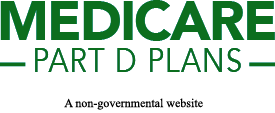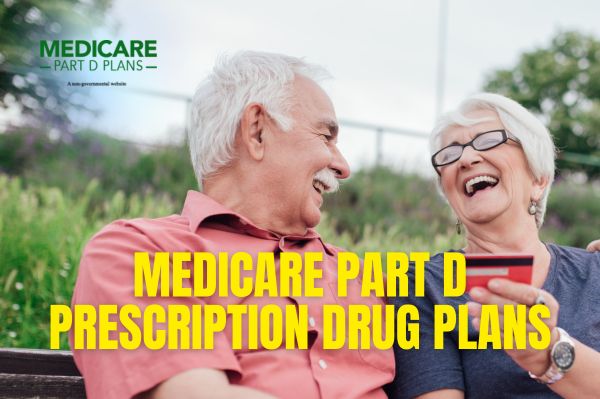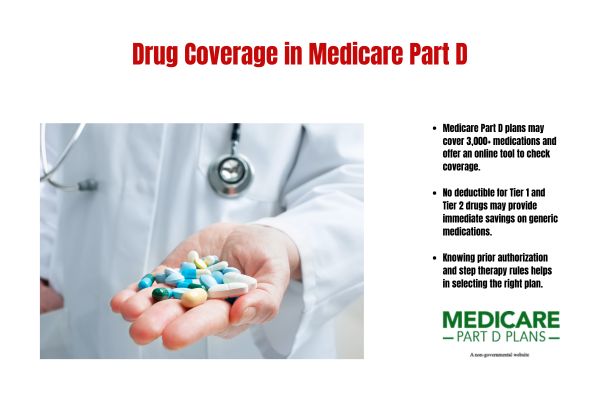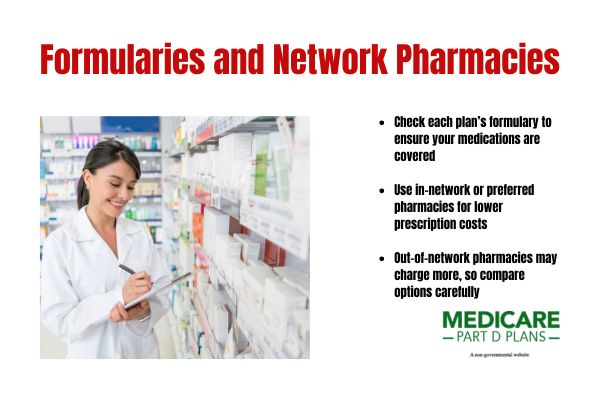Find a Medicare Part D prescription drug plan

Medicare Part D
Prescription Drug Coverage 2026
Medicare Part D Prescription Drug Plans
Medicare Part D prescription drug plans may help to lower medication costs for Medicare recipients. This article will explore how these plans work, the possible costs, coverage stages, and tips for selecting the best plan to fit your needs.
Key Takeaways
- Medicare Part D could offer essential coverage for prescription medications, potentially benefiting all Medicare beneficiaries by lower costs and enhancing financial security.
- Understanding the potential costs associated with Medicare Part D, such as premiums, deductibles, and out-of-pocket expenses, will likely be crucial for selecting the most economical and suitable plan.
- The structure of Medicare Part D comprises distinct coverage stages—Initial Coverage, Coverage Gap, and Catastrophic Coverage—each with unique cost responsibilities that may affect overall medication expenses.
Understanding Medicare Part D Prescription Drug Plans
Medicare Part D will likely be designed to help cover the cost of prescription drugs for those eligible for Medicare. This program is available to everyone with Medicare and could potentially reduce the financial burden of medications.
Considering a Part D plan may help to prevent higher premiums later, even if you’re not currently taking prescription drugs. Additionally, understanding Medicare drug coverage might further assist in making informed decisions.
Part D plans will likely encompass a variety of options that could be tailored to fit different medical and financial needs. Medicare beneficiaries may access their information and manage their plans anytime through their Medicare account, ensuring they stay informed and in control of their health.
Securing a Part D plan for the year will likely prepare you for current health needs and possibly protect you against unforeseen future expenses. This proactive approach likely ensures you’re always covered, giving you peace of mind and financial stability.
Possible Costs Associated with Medicare Part D
Knowing the costs associated with Medicare Part D might help in making an informed decision. These costs might include:
- Monthly premiums
- Annual deductibles
- Copayments
- Coinsurance
Each of these components may vary significantly based on the plan you choose and your income level.
To find the most economical option that meets your needs, compare the different plans by using the Plan Finder tool on this website. Remember, the Extra Help program may also support those with limited income and resources by potentially reducing these costs.
Monthly Premiums
Monthly premiums will likely be a major cost associated with Medicare Part D plans. The cost of these premiums may vary based on the plan selection and your income level. Most Part D plans might require a monthly premium, which you’ll likely pay regardless of filling prescriptions.
Additionally, enrolling late in a Part D plan may result in a late enrollment penalty, which could increase your monthly payments. To avoid extra costs, enroll as soon as you’re eligible.
Annual Deductibles and Copayments
The annual deductible amount for Medicare Part D
Once the deductible has been met, beneficiaries might share drug costs through copayments or coinsurance during the Initial Coverage stage.
Copayments are fixed amounts you pay for your medications, while coinsurance is a percentage of the drug cost. Once you’ve met your deductible, these copay payment amounts might come into play, likely making it easier to manage your prescription drug costs throughout the year.
Coinsurance and Out-of-Pocket Costs
During the Initial Coverage Stage, beneficiaries may pay up to 25% coinsurance for covered Part D drugs until they reach a specified spending limit. This stage will likely be crucial because it determines how much you might spend out of pocket before moving to the next coverage phase.
Out-of-pocket costs may add up quickly, so it’s important to keep track of your spending.
Once you reach this limit, you’ll qualify for Catastrophic Coverage, which could significantly reduce your costs for the remainder of the year.
Medicare Part D Coverage Stages
Medicare Part D coverage is structured in three key stages: the Deductible period, Initial Coverage period, and Catastrophic Coverage. Each stage represents different cost responsibilities for beneficiaries and will likely play a crucial role in managing your prescription drug expenses throughout the year.
Knowing these stages could help you anticipate costs and make informed healthcare decisions as each stage impacts your coverage differently.
Initial Coverage Stage
During the Initial Coverage Stage, some Part D plans may not impose any deductible, which may allow beneficiaries to receive coverage immediately. In this phase, beneficiaries typically pay up to 25% of the medication costs.
The Initial Coverage Stage concludes that total drug costs reach $2,000 in 2025. This phase will likely be designed to provide substantial coverage while sharing the cost burden between the beneficiary and the plan.
Coverage Gap (Donut Hole)
The Coverage Gap, also known as the Donut Hole, acts as a temporary limit where beneficiaries may pay all drug costs until reaching an out-of-pocket limit. During this phase, beneficiaries will likely be responsible for the full price of their medications, which could be a significant financial burden.
Once you reach the specified out-of-pocket maximum, you exit the Coverage Gap and move into Catastrophic Coverage. Planning for this phase might help you avoid unexpected expenses.
Catastrophic Coverage
Catastrophic Coverage will likely kick in once you’ve spent $2,000 out of pocket on covered drug. In this stage, your costs may drop significantly, and you might only pay a minimal amount for your medications.
This stage could potentially ensure that no matter how expensive your prescription drug costs get, you will likely have financial protection in place. Beneficiaries might not pay for covered drugs after reaching the out-of-pocket threshold, possibly providing peace of mind for those with high medication expenses.
Choosing the Right Medicare Part D Plan
Choosing the right Medicare Part D plan will likely involve evaluating various factors. Enrollment requires having Medicare Part A or Part B, residing in the plan’s service area, and completing an enrollment request during the designated election period.
Compare plans based on potential costs, coverage, and annual spending limits. Consider how each plan might handle your specific medications and any additional benefits they may offer.
Remember that eligibility for these plans requires U.S. citizenship or legal residency, so ensure you meet these criteria before enrolling. Carefully evaluating your options will likely help you find a plan that suits your medical and financial needs.
Formularies and Covered Prescription Drugs
A formulary is a drug list of covered prescription drugs under a specific Medicare Part D plan. This list is crucial in determining which medications may be available to you and at what cost. Ensure your current prescriptions may be covered by evaluating a Part D plan’s formulary.
Plans will likely have specific rules regarding prescription drug coverage, such as prior authorization and step therapy, as outlined in the contract renewal. Check the formulary regularly, as annual changes might affect your treatment coverage.
Additionally, some plans may offer extra benefits, such as coverage for vaccines or specialized medications. These potential benefits may vary and could potentially provide added value and convenience.
Network Pharmacies and Mail-Order Options
Network pharmacies may help to reduce certain out-of-pocket costs for prescriptions. Preferred pharmacies may also offer lower prices compared to non-network pharmacies, where you might end up paying full retail prices.
Mail order pharmacies could offer a convenient, sometimes lower-cost way to obtain medications from a pharmacy. They allow for larger supplies, such as a 90-day supply, which could help save time and money. Home delivery options may also ensure you never run out of essential medications.
See plans in your area instantly!
Advertisement
Financial Assistance Programs
The Extra Help program will likely help individuals with limited income and resources reduce their Medicare Part D costs, such as deductibles and copayments.
Eligibility will likely be based on financial circumstances, which may require documentation like bank statements, tax returns, and evidence during the application process. Additionally, the low-income subsidy program may provide further assistance to those who qualify.
You can apply for the Extra Help program at any time, both before and after enrolling in a Medicare Part D plan. Pharmaceutical companies may also offer patient assistance programs for further financial aid.
Tips for Saving on Prescription Drug Costs
Switching from brand-name to generic medications could drastically reduce certain out-of-pocket expenses, as generics will likely be cheaper. Using network pharmacies may also help to reduce costs for prescription drugs under Medicare Part D.
To save on prescription costs, consider the following:
- Request a 90-day supply of medication to help lower costs per day, likely making it a financially savvy choice for ongoing prescriptions.
- Explore discount programs.
- Consult with your doctor about cheaper alternatives, which could potentially lead to substantial savings on prescriptions.
Find a Plan and Enroll Online Yourself!
Advertisement
Summary
Navigating Medicare Part D might be complex, but understanding its components and coverage stages will likely help you make informed decisions. From choosing the right plan to managing costs through various stages, being proactive about your prescription drug coverage is crucial.
Take advantage of financial assistance programs, utilize network pharmacies, and explore cost-saving tips to keep your expenses manageable. By staying informed and prepared, you can ensure that your healthcare needs are met without breaking the bank.
Frequently Asked Questions
What is the annual out-of-pocket threshold for Medicare Part D in 2026 ?
The annual out-of-pocket threshold for Medicare Part D
How much is the annual deductible for Medicare Part D in 2026 ?
The annual deductible for Medicare Part D
What happens during the Coverage Gap (Donut Hole) phase?
During the Coverage Gap phase, you may be responsible for paying the full cost of your medications until you reach a designated out-of-pocket maximum. This likely means it’s crucial to monitor your expenses closely during this time.
Can I apply for the Extra Help program before enrolling in a Medicare Part D plan?
You may apply for the Extra Help program at any time, even before enrolling in a Medicare Part D plan. This could potentially allow you to secure assistance with prescription drug costs ahead of your enrollment.
How could I reduce my prescription drug costs under Medicare Part D?
To help reduce your prescription drug costs under Medicare Part D, consider switching to generic medications, utilizing network pharmacies, requesting a 90-day supply, and exploring available discount programs. Implementing these strategies could potentially lead to substantial savings.
Begin Choosing your plan
Advertisement
ZRN Health & Financial Services, LLC, a Texas limited liability company.



